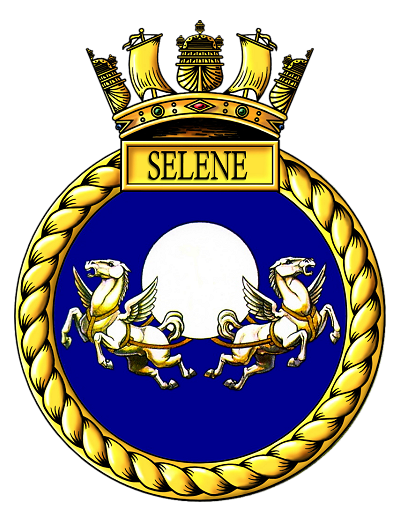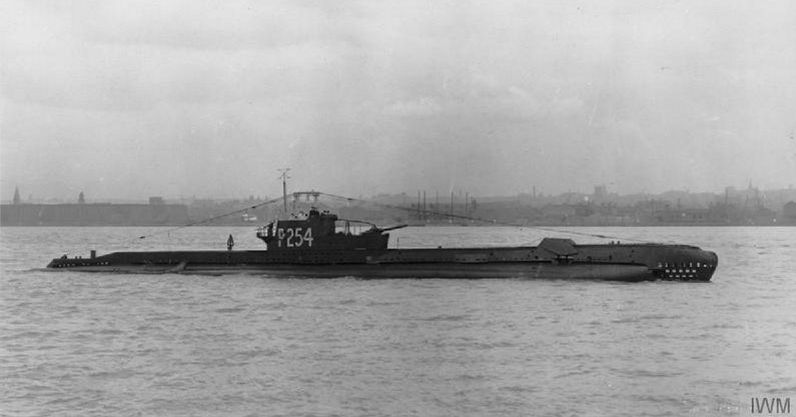S-Class Submarine

Battle Honours
Malaya 1945
Specifications
Builder: Cammell Laird Shipyard, Birkenhead, United Kingdom
Displacement: 814 tons
Length: 217 ft
Beam: 23 ft 8 in
Draught: 11 ft
Propulsion: 2 × 950 bhp (708 kW) diesel engines, 2 × 650 hp (485 kW) electric motors driving two propellers
Speed: 14.75 knots (16.97 mph; 27.32 km/h) surfaced. 9 knots (10 mph; 17 km/h) submerged
Range: 7,500 Nautical miles surfaced (8,600 mi; 13,900 km) at 10 knots (12 mph; 19 km/h) 120 Nautical miles submerged ( 140 mi; 220 km) at 3 knots (3.5 mph; 5.6 km/h)
Armament: 6 × bow & 1 stern 21 in (533 mm) torpedo tubes – carried 13 torpedoes or 12 mines; 1 × three-inch (76 mm) gun (QF 4-inch deck gun; 1 × 20 mm Oerlikon AA gun; 3 × .303 calibre machine guns
Crew complement: 48
Commanding Officers
Lt. Hugo Rowland Barnwell Newton, DSC, RN 15 May 1944 - 04 Dec 19455
Post War:
Lt. D.R. Johnston DSC, Sept 1948
Lt. E.C. Gigg, RCN Apr 1953
Lt. G.C. Morris, RCN Apr 1955
Related items
None
Reminiscences
None
Gallery
None
H.M. S/M SELENE
PAGE UNDER CONSTRUCTION
Read aloud

Image copyright IWM (FL 3452)
Early history
She was ordered from Cammell Laird Shipbuilders, Birkenhead, on October 19th 1942, one of the batch four boats ordered as part the third group of S class submarines for the Royal Navy. Her keel was laid down on April 16th 1943. She was launched on April 24th 1944.
On completion of her builder’s trials she departed for Holy Loch on July 12th 1944, arriving the following day. She commissioned as H.M. Submarine SELENE at Holy Loch on July 14th 1944 under the command of Lieutenant Commander. H.R.B. Newton, DSC, RN.
Allocated to the East Indies Fleet
H.M. Submarine SELENE departed Holy Loch for Gibraltar on November 23rd 1944 with convoy OS 96 / KMS 70 on the first leg of the trip to the Far East.
Reallocated to the British Pacific Fleet
H.M. Submarine SELENE departed Fremantle for Subic Bay, Philippines on May 16th 1945 to join the 8th Submarine flotilla attached to HMS MAIDSTONE. She was to conduct a patrol en route, arrived on June 2nd.
Post War history
After the war had ended Selene visited Hong Kong before proceeding back to the U.K. She arrived at Portsmouth on November 9th 1945. She was transferred to the reserve fleet there on December 4th 1945.
After the war the surviving S Class boats were refitted to install a folding snorkel mast aft of the control tower; to accommodate this the stern torpedo tube and the 'Bandstand' Anti-Aircraft platform and 20mm Oerlikon were removed. Some had their main deck gun removed as well. The snorkel allowed a submarine to cruise on diesel engines while submerged allowing the batteries to be recharged without the need to surface and risk detection by an enemy. When raised the ‘snort’ was the only part of the boat above the surface drawing in clean air while discharging the toxic diesel exhaust. Later modernisation work included installation of an improved sonar mounted in a dome on the casing above the forward dive plane and improved radar.
On emerging from her modification refit SELENE was allocated to the 2nd Submarine Flotilla, attached to HMS MAIDSTONE at Portland in 1952, She transferred to the 3rd Submarine Flotilla, attached to HMS MONTCLARE, at Rothesay in 1954. She returned to Portland in 1955 to join the 2nd Submarine Squadron attached to HMS MAIDSTONE until 1957 when she was paid off to the reserve and later put up for disposal. She was scrapped on June 6th 1961.
Last modified: 23 February 2023
Primary information sources
Additional sources:
uboat.net entry for H.M. Submarine SELENE
britsub.x10.mx entry for H.M. Submarine SELENE
Comments (3)
They were trialing the new sail type conning tower at that time. A great experience for a young cadet.
Keith Prew L/S uc2